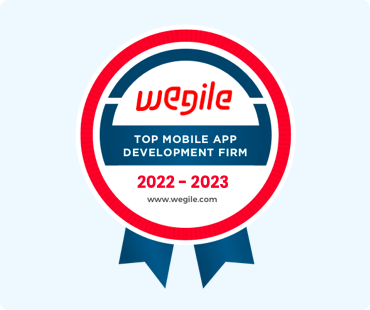Have you ever thought about why so many developers are talking about Flutter? Since its inception in 2017, Flutter has become a favorite among coders for building nifty, natively compiled mobile, web, and desktop applications from a single codebase. This rise to prominence isn't just hype; its substantial adoption rates back it. As of the latest reports, over 2 million developers are actively using Flutter less than five years after its release, and it has been featured in more than 500,000 apps on various app stores.
Now, let's shift gears a bit; why is cross-platform development grabbing headlines? In the digital world, the ability to launch products quickly across multiple platforms is a game-changer for businesses. This approach not only speeds up the development process but also significantly cuts down costs. Instead of employing multiple teams to work on the same app for different systems, you need just one cohort, knitting together codes that play well on Android and iOS. That's efficiency at its best!
Are you curious about what this guide has in store? Whether you're a seasoned developer or a newcomer eager to dip your toes into app development, this guide promises a treasure trove of insights. We've got you covered, from setting up your development environment and taking your first steps with Flutter to diving deep into advanced features and best practices.
We'll explore the nuts and bolts of Flutter's architecture, demystify state management, and even walk you through making your app shine on the app store. Ready to embark on this exciting journey?
Let's get fluttering!
What Exactly is Flutter?
Imagine this: You're an artist, but instead of canvases, your medium is screens of all sizes- smartphones, laptops, tablets, you name it. Flutter is your magic brush. It's a free, open-source UI software development kit created by Google. It's like a one-stop shop for building visually appealing, natively compiled mobile, web, and desktop applications- all from a single codebase!
Core Features of Flutter
Flutter is not just popular because it's a trend; it's genuinely packed with features that make developers' lives easier and their apps smoother and more attractive.
- Fast Development and Hot Reload: Imagine changing your app's code and seeing it come to life in seconds. That's a hot reload! It helps you experiment, build UIs, add features, and quickly fix bugs. Flutter’s hot reload feature is a real game changer for productivity, making it easier to iterate rapidly on your design without restarting your app or losing its state.
- Expressive and Flexible UI: With Flutter, your creative side has no bounds. You get a rich set of widgets to craft your apps with all the visual oomph you can imagine. Whether aiming for a minimalist look or vibrant animations, Flutter gives you the tools to design it easily.
- Native Performance: Despite all the magic, the result is always a smooth, cutting-edge app that feels completely native. Flutter’s approach ensures that your app can directly compile to native code, which helps your applications run swiftly and smoothly on every platform.
The Dart Programming Language
- Outline and Benefits of Dart: Flutter uses Dart, a language optimized by Google for building applications that need to be fast and aesthetic. It's easy to learn, especially if you're familiar with languages like JavaScript. Dart is excellent for Flutter because it allows developers to write fast and scalable programs. It's designed to provide a smooth and predictable performance across all platforms, which means fewer surprises when you move from development to production.
- How Dart Complements Flutter: Dart complements Flutter like peanut butter complements jelly. It's made to match Flutter's architecture, providing features like just-in-time compilation for faster development cycles (thanks to hot reload) and ahead-of-time compilation for fast, predictable, optimized performance in production environments. Dart also supports Flutter in crafting complex animations and transitions that look and feel fluid, making the user experience seamless.
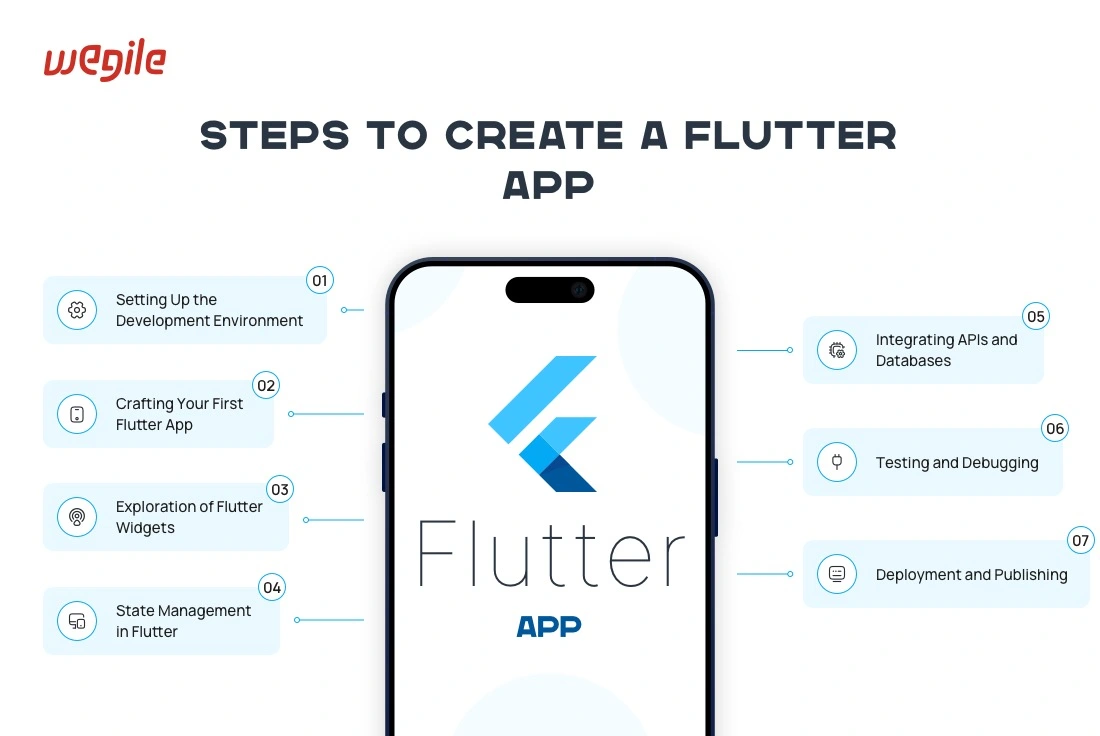
-
1. Setting Up the Development Environment
Starting with Flutter is like preparing your kitchen before cooking a new recipe. You need the right tools and setup to ensure everything runs smoothly. Let’s walk through the essential steps to prepare your development environment so you can start building mobile apps with Flutter!
System Requirements
First, let's ensure your computer is ready to handle Flutter. Your system doesn’t need to be top-of-the-line, but it should meet a few basic requirements:
- Windows: You’ll need Windows 7 SP1 or later, at least 400 MB of free disk space (excluding space for IDE/tools), and PowerShell 5.0 or newer, along with Git for Windows.
- MacOS: Mac users need MacOS (64-bit) version 10.13 or higher, about 700 MB of disk space, and the latest version of Xcode if they plan to develop iOS applications.
- Linux: Linux users should have a 64-bit version of Ubuntu or another Debian-based distro, at least 600 MB of disk space, and the latest version of Git.
Installing Flutter SDK
Now that you've ensured your system can handle Flutter, it’s time to install the Flutter SDK, the software development kit containing everything you'll need to build Flutter apps. Here’s how you can do it:
- Download the Flutter SDK: Visit the official Flutter website and download the latest stable release of the Flutter SDK.
- Extract the File: Once downloaded, extract the zip file to a desired location on your disk. Remember this path because you'll need to refer to it later.
- Update Your Path: Add the Flutter directory to your system’s path. This step varies depending on your operating system but is crucial for using Flutter commands in your terminal.
Setting Up an Editor
Flutter is quite flexible in terms of editors. You can use whichever code editor you prefer, but the most common ones are Android Studio and Visual Studio Code.
- Android Studio: Android Studio provides an integrated development environment with built-in support for Flutter and Dart. To set it up, download and install Android Studio, then install the Flutter and Dart plugins from the plugin marketplace within the IDE.
- Visual Studio Code: If you prefer something lighter, Visual Studio Code is a great choice. After installation, simply install the Flutter and Dart extensions from the VS Code marketplace to enable Flutter support.
Configuring the Android and iOS Emulators
You'll want to set up emulators to see your app come to life without needing a physical device.
- Android Emulator: Set this up through Android Studio. First, ensure you have installed the Android SDK via the Android Studio setup. Then, open the AVD Manager, create a virtual device, and download the necessary system images for the Android versions you want to test.
- iOS Emulator: Available exclusively on macOS, you can set up the iOS emulator directly through Xcode. Install Xcode through the App Store, open it, navigate to the "Preferences," select the "Components" tab, and download your required simulators.
Once you’ve followed these steps, your development environment will be all set up!
-
2. Crafting Your First Flutter App
Ready to build your first Flutter app? Let’s roll up our sleeves and jump in:
- Open Your Editor: Start your preferred editor (Android Studio or Visual Studio Code).
- Create a New Flutter Project: Click ‘New Flutter Project’ (in Android Studio), open the command palette, and select ‘Flutter: New Project’ (in Visual Studio Code).
- Fill Out Project Details: Provide a project name and specify the project location on your computer.
- Finish Setup: Click ‘Finish’ and wait for your editor to set up the project files.
Voila! You’ve created a new Flutter project. Now, let’s understand what’s inside.
Exploring the Structure of a Flutter App
A typical Flutter project contains several vital folders and files:
- Lib folder: This is the primary directory where you'll write most of your application code. It includes the main.dart file, which serves as the entry point of your application.
- pubspec.yaml: This file manages your app's assets and dependencies. Here, you can add external libraries, fonts, and image assets.
- IOS and Android: folders contain code specific to each platform and are essential when adding functionality or adjusting settings.
Basic Widgets and Their Uses
Widgets are the building blocks of your Flutter app. Here’s a quick look at some basic widgets:
- Text: Used to display text on the screen. It’s customizable with various fonts, sizes, and styles.
- Row and Column: These are used for layout. A Row arranges widgets horizontally, and a Column arranges them vertically.
- Container: A multi-purpose widget that combines drawing, positioning, and sizing. The Container can hold a child widget and be styled with padding, margins, borders, and more.
Running the App on an Emulator
To see your app in action:
- Open the Emulator: Start your Android or iOS emulator from your development environment.
- Run the app: Click the ‘Run’ button on your IDE or type flutter run in your terminal. You’ll see your app boot up on the emulator.
-
3. Deep Exploration of Flutter Widgets
Understanding Stateless and Stateful Widgets
- Stateless Widgets: These are immutable, meaning their properties can’t change; all values are final. Use them when the UI depends on the information within the widget itself and does not change over time.
- Stateful Widgets: These are dynamic as they can change during runtime based on user interaction or data changes. They maintain a state that might change during the widget’s lifetime.
Commonly Used Widgets and Their Practical Applications
- Scaffold: Provides a high-level structure for implementing drawers, snack bars, and bottom sheets.
- ListView: Ideal for creating a scrollable list of elements, perfect for displaying a long list of items.
- FloatingActionButton: Commonly used for primary actions in an app, like adding a new contact or composing a message.
Custom Widgets and Reuse
Creating custom widgets is a powerful feature of Flutter. You can combine smaller, simpler widgets to create more complex and reusable custom widgets. It makes your code cleaner and promotes code reuse across your projects.
Tips for Effective UI Design in Flutter
- Keep it simple: Start with simple widgets and add complexity as needed.
- Be consistent: Use a consistent theme across your app to maintain a coherent look.
- Test on multiple devices: Always check how your UI looks on different screen sizes and orientations.
-
4. State Management in Flutter
Think of state management as keeping everyone's order at a large dinner table. In app development, "state" refers to the information or data your app displays and manipulates. Managing state efficiently is crucial as it ensures your app behaves predictably and maintains a smooth user experience as it grows more complex.
Different Approaches and Their Suitable Scenarios
- Provider: This is like having a helpful assistant at our dinner party, passing messages and updates between diners. It’s simple and effective for most apps, making it a go-to choice for many developers. It's great when your app's state changes are not overly complex but need efficiency.
- Riverpod: Imagine Provider got a promotion. Riverpod extends the Provider's capabilities, offering more flexibility and removing some limitations, like context dependency. It's suitable for larger applications where you might need a more robust solution that's still easy to manage.
- Bloc: Bloc stands for Business Logic Component. It's like having a manager for state changes. It ensures everything is in order by using events to trigger state changes. This method is excellent for complex applications with multiple states that need precise control and predictability.
- GetX: This is the multitasker of the group, handling not just state management but also dependency injection and route management. It’s perfect for developers looking for an all-in-one solution, especially in large applications where these aspects intertwine.
Pros and Cons of Each Method
-
Provider:
- Pros: Simple to use, integrates well with Flutter, suitable for beginners.
- Cons: It can get cumbersome in extensive applications with complex state changes.
-
Riverpod:
- Pros: More versatile and robust than Provider, does not depend on context.
- Cons: Slightly steeper learning curve compared to Provider.
-
Bloc:
- Pros: Excellent for complex state management, promotes a clean architecture.
- Cons: More boilerplate code can be overkill for simpler applications.
-
GetX:
- Pros: Extremely efficient for large applications, reduces boilerplate significantly.
- Cons: It can be complex and overwhelming for beginners and has a steep learning curve.
-
5. Integrating APIs and Databases
In the app development world, connecting to RESTful APIs is like dialing into a radio station; it lets your app receive data broadcasts from a server. To integrate an API, you use HTTP requests to fetch data, which your Flutter app can then process and display.
Displaying Live Data in a Flutter App
Displaying live data is crucial in keeping your app users updated with the latest information. Flutter can update its UI in real-time as data from APIs changes, which is perfect for apps that rely on timely information, like news aggregators or social media platforms.
Overview of Using Databases in Flutter
- SQLite: This is like a filing cabinet in your app where you can store data locally. SQLite is fantastic for apps that work offline or manage large amounts of data without continuous server queries.
- Firebase: Imagine having a cloud-based storage system that stores data and handles user authentication and dynamic server-side processing. Firebase is a powerful tool for apps that require real-time data updates, user management, and seamless online integration.
-
6. Testing and Debugging Flutter Apps
Just like a chef tastes a dish before serving, testing is crucial to ensure your app performs well under various conditions. Flutter provides a comprehensive testing suite designed to handle different layers of your application:
- Unit Tests: They are quick checks to confirm that individual functions or classes work as expected. Think of them as testing each ingredient for freshness.
- Widget Tests: They evaluate single widgets in isolation. It’s like ensuring each dish is perfectly cooked before it reaches the table.
- Integration Tests: These tests check how multiple components work together, akin to testing the entire meal course to ensure every dish complements the others perfectly.
Overview of the Flutter Testing Framework
Flutter's built-in testing framework is a versatile toolset that allows you to evaluate your app’s reliability and stability rigorously. It provides a rich set of assertions to test the app's performance and behavior. It guarantees that everything functions as intended before the app reaches your users.
Best Practices for Debugging
Even the best chefs encounter unexpected issues in the kitchen. Here are some tips to effectively debug your Flutter apps:
- Use the DevTools: Flutter's DevTools suite is like having a culinary thermometer and a tasting spoon. It helps you inspect your app's layout, view the widget tree, and monitor app performance in real time.
- Keep an Eye on Logs: As a chef listens to feedback, pay attention to log outputs. They can tell you exactly where things might be going wrong.
- Breakpoint Magic: Set breakpoints in your code to pause execution and inspect variables and computation steps at specific stages, much like pausing a cooking show to explain a technique.
-
7. Deployment and Publishing
Before your app hits the app store shelves, it needs a bit of polishing:
- Optimize Performance: Minimize resource usage and ensure the app runs smoothly on all target devices.
- Final Testing: Conduct thorough testing, including beta releases, to catch any unforeseen issues.
- Versioning: Update the app version and build numbers. It is like labeling your dishes with the right ingredients and cooking instructions.
Deploying to Android and iOS
Flutter makes deploying your app to both Android and iOS platforms a streamlined process:
- Build the App Package: Use Flutter commands to build an APK for Android or an IPA for iOS.
- Sign Your App: Digital signing is akin to putting a seal of quality on your product. Ensure your app is signed with the proper developer certificates.
Navigating App Stores' Guidelines and Requirements
Each app store has its own set of rules, much like different countries have customs regulations:
- Review Guidelines: Familiarize yourself with the policies of the Google Play Store and Apple App Store. Ensure your app complies with their content, privacy, and functionality requirements.
- Prepare Metadata: This includes your app’s title, description, and screenshots, which are like the cover of a cookbook. They need to be appealing and straightforward.
- Submission and Review: The app will undergo a review process once submitted. This is similar to a food critic reviewing a new restaurant. Your app will be approved and ready for users to download if all is well.
-
8. Advanced Flutter
- Animations in Flutter: Imagine your app as a puppet show where every movement adds life to the story. Flutter enables this dynamic scenery through powerful yet simple animation tools. By defining animations, you can smoothly transition UI elements on the screen, catching your user's eye and enhancing the interactive experience. From bouncing buttons to sliding menus, animations in Flutter make your app feel more intuitive and vibrant.
- Advanced App Architectures: A building needs a stronger framework as your app grows. Flutter supports advanced architectures that help manage a growing project's complexity without losing performance. Flutter is flexible enough to accommodate whether you prefer the simplicity of Provider, the robustness of Bloc for state management, or even custom architectures that suit your specific needs. These structures ensure that as your app scales, it remains maintainable and efficient.
- Package and Plugin Development: Think of packages and plugins as specialty tools in a toolbox. By creating your means, you can provide solutions for your projects and those facing similar challenges. Flutter allows you to develop reusable code packages or platform-specific plugins that tap into native features. This ecosystem enriches the community, fostering a space where solutions are readily available and easily accessible.
-
9. Resources and Community
Embarking on a Flutter learning journey? Here are some top-notch resources to fuel your growth:
- Books: "Flutter for Beginners" provides a solid foundation, while "Practical Flutter" can enhance your skills further.
- Websites: The official Flutter website is a treasure trove of documentation, samples, and tutorials. For community-driven content, Medium and Dev. have countless articles on specific Flutter topics.
- Courses: Platforms like Udemy, Coursera, and Pluralsight offer detailed Flutter courses that cater to all levels, from novice to advanced.
- Flutter Communities and Forums: Joining a community can significantly accelerate your learning curve. Places like the Flutter Dev subreddit, Flutter Community Slack, and Stack Overflow are bustling with discussions, advice, and support. These platforms are perfect for connecting with fellow developers, sharing knowledge, and finding solutions to common (and uncommon) issues.
Conclusion: Mastering Flutter with Wegile
Throughout this guide, we've taken a comprehensive journey through Flutter app development. From setting up your environment and crafting your first Flutter app to diving into advanced topics like animations and app architectures, we've covered the essential aspects that make Flutter an excellent choice for developers. With Flutter's ability to streamline the development process across multiple platforms, its rich features, and its robust community support, you're now equipped with the knowledge to build and enhance your mobile applications.
Flutter's future in app development looks promising. Its continuous updates and the growing ecosystem of packages and tools signify its staying power and potential to shape the future of cross-platform development. Wegile, with its expertise in cutting-edge solutions, stands ready to help you harness the full potential of Flutter, whether you're building your first app or scaling up an existing project.
Are you inspired to transform your app ideas into reality? There’s no better time to start than now. Join the ranks of innovative developers using Flutter to create stunning, high-performance applications. With Wegile's expertise in Flutter app development, you're not just learning but preparing to lead in the app development space. Visit Wegile’s Flutter App Development Services to kickstart your project and leverage the power of Flutter to its fullest. Let's build something unique together!

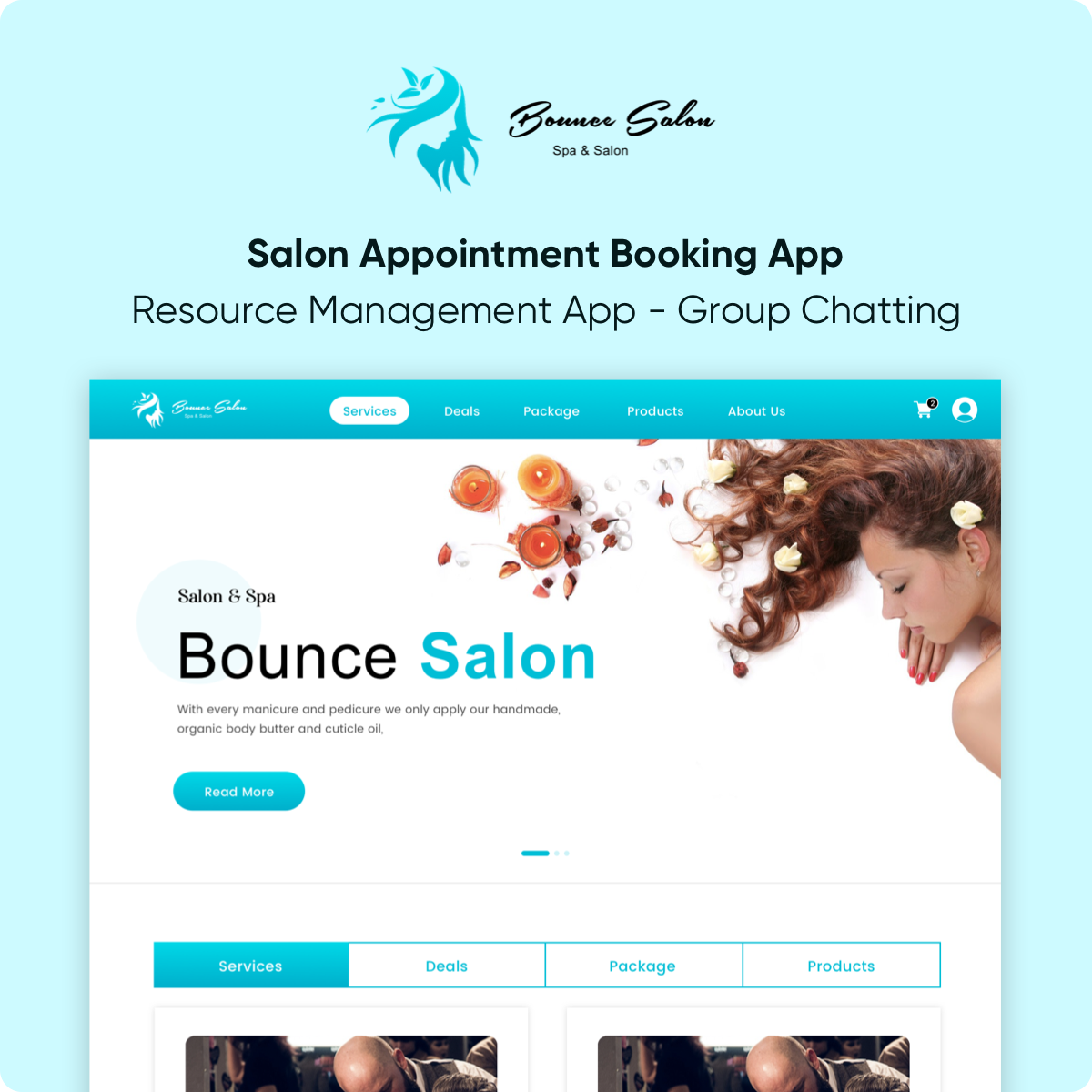
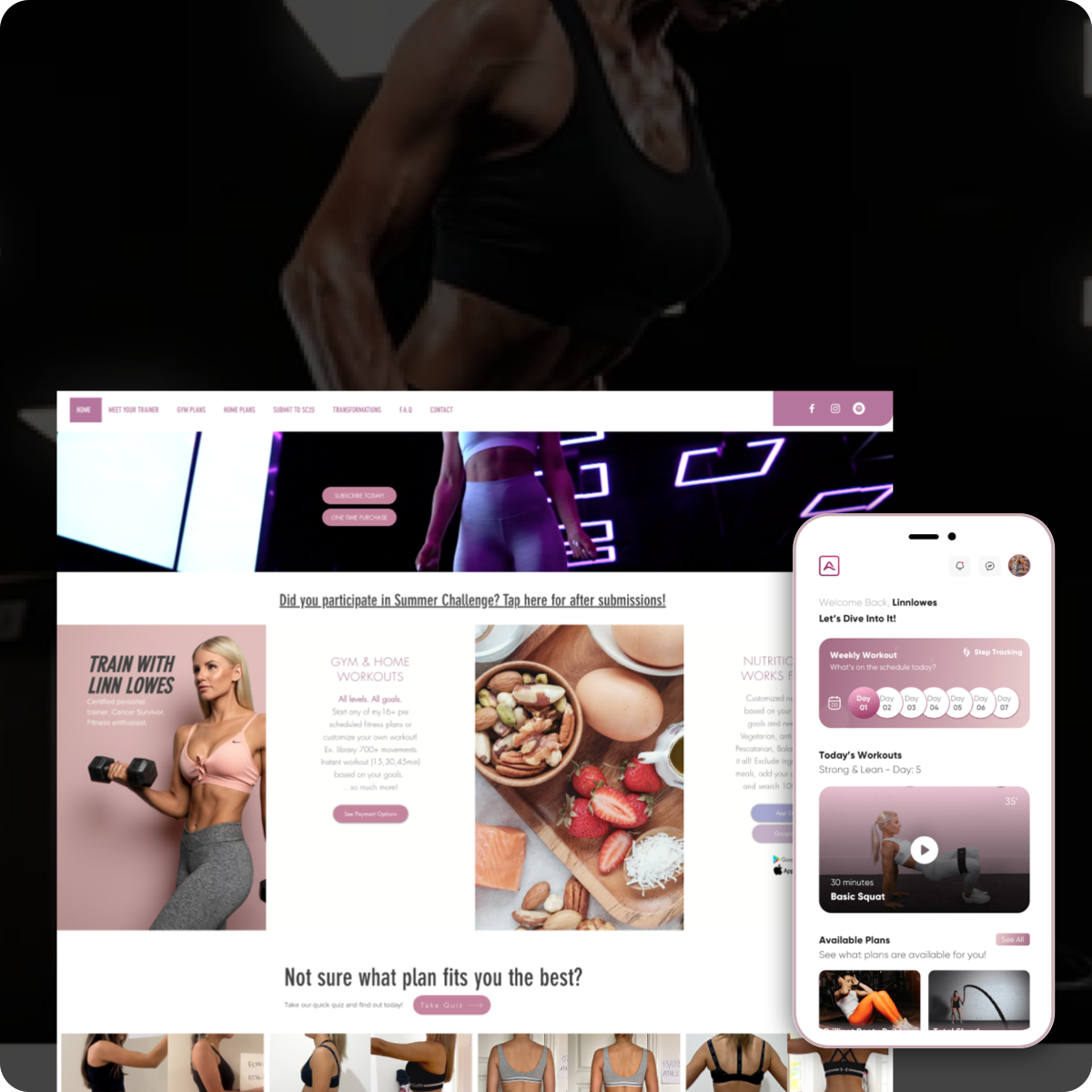
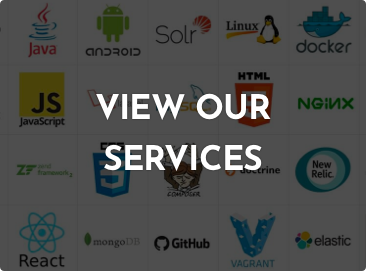 Browse Our Services
Browse Our Services
